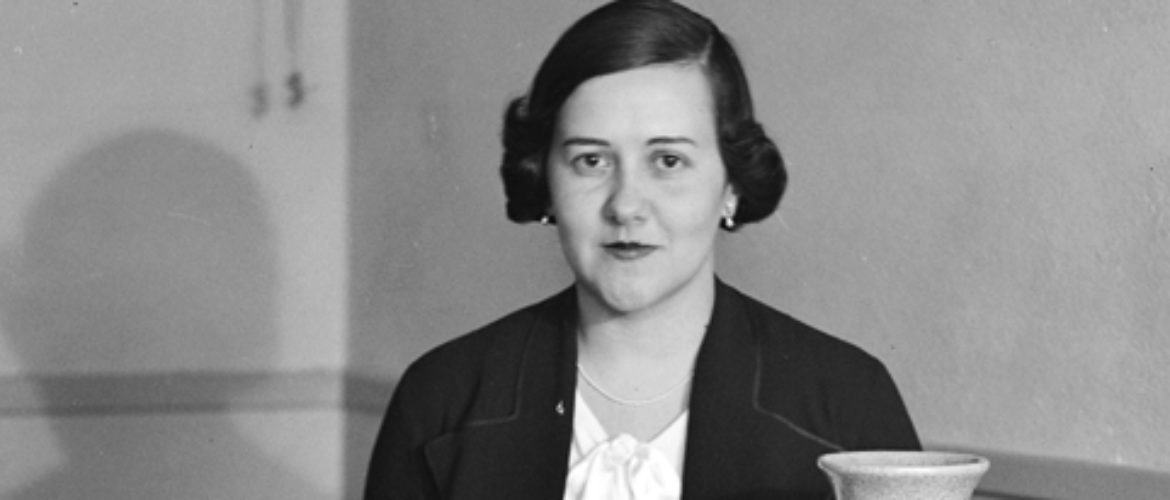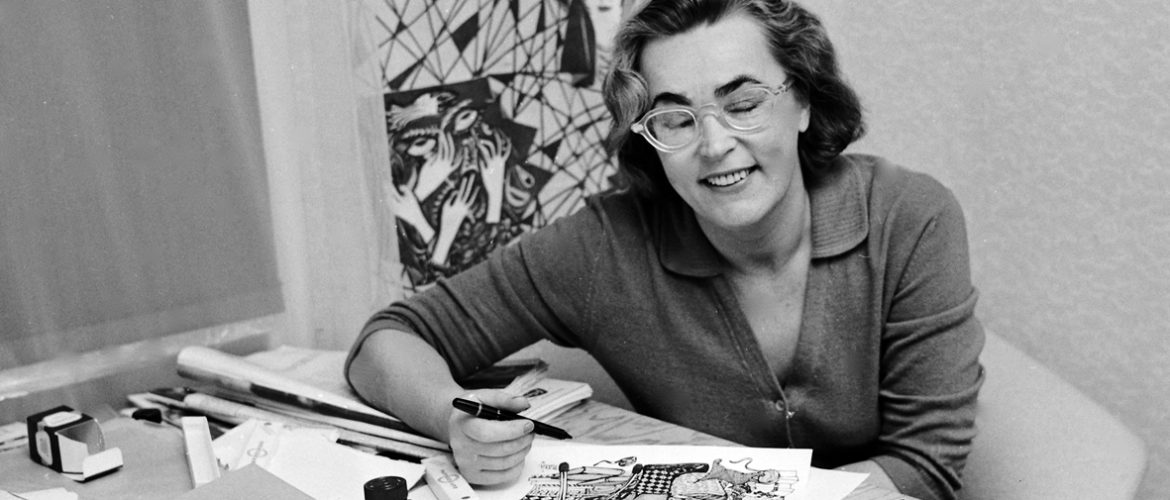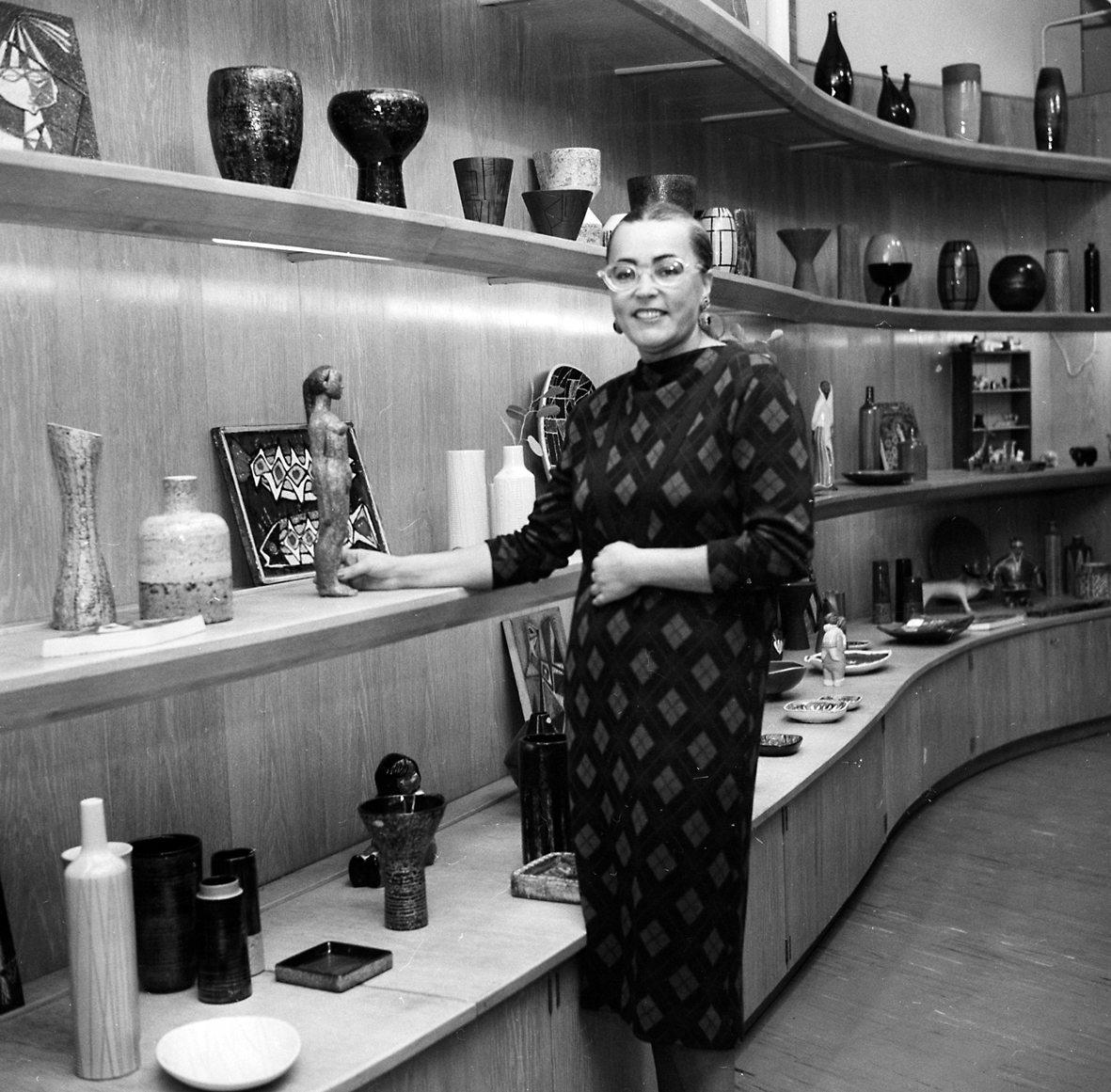1905-1952.
Ceramicist, painter.
Anna-Lisa Thomson studied at the Higher School of Industrial Arts in Stockholm between 1924-1928 and then in Italy, Austria, Prague and Dresden.
Between 1928 and 1933 she worked at the S:t Erik earthenware factory in Uppsala, designing tea sets in green glaze and ceramic objects with relief decoration. In the mid-1930s, Thomson came to Upsala Ekeby and worked there throughout her working life.
Thomson mainly created art objects in various ceramic materials with pure, often nature-inspired, decorative elements. Among his most famous works are the vase Paprika (1948), which was made in various shapes and sizes, and the urn Lancett (1949). Thomson is represented in the National Museum and in several other museums.
She also painted, and her works were often inspired by nature, with motifs from the west coast where she spent part of the year. Her book Eko av dagars ljusa klang (1953; Echo of the Bright Sound of Days ), with poems and illustrations by Anna-Lisa Thomson, was published posthumously.
Burial site: 0318-1310
Image description: Anna-Lisa Thomson with ceramics, Uppsala 1937, photo: Gunnar Sundgren / Upplandsmuseet. [The image is cropped]
Click here for an uncropped image




